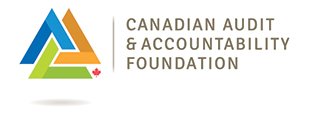
Environmental pressures and degradation continue to be of concern. In Canada there are important environmental challenges. From declining biodiversity to contaminated drinking water, from the impacts of climate change to urban smog, from threatened aquifers to invasive species, communities and ecosystems from coast to coast in Canada are experiencing problems that need to be addressed. The good news is that performance audits constitute a great opportunity to bring about change, to have an impact, and to add value.
Here are some things you can do to increase the positive impact of an environmental performance audit.
Criteria: Go Beyond ComplianceGovernment environmental regulations are often based on minimum requirements. A plausible shortcut for auditors is to report on compliance with regulations, guidelines or policies. These provide an uncontroversial set of criteria that will be readily accepted by the organization audited and understood by the stakeholders. But because policy or regulatory requirements are often intrinsically minimal, this approach may be a missed opportunity to provide a high-impact audit that will make a positive difference. Performance audits can go beyond compliance by:
|
|
Scope: Consider LinkagesEnvironmental issues are often connected. Adopting a sustainable development approach (i.e. one that considers the economy, the environment, and society) creates a wider perspective and is a good way of integrating the tapestry of linkages that often define environmental issues. Different audiences have different priorities, which may include the development of the economy, the creation and maintenance of jobs, and the protection of citizens’ health and safety. If an environmental audit can show concrete links to these other issues, the resulting audit reports will appeal to a broader public and will not be easily dismissed as supporting impractical, one-sided visions. |
|
Reporting: Use Audit Reports to EducateEnvironmental questions are often complex and it may be necessary to explain important concepts in a report’s introduction to help readers fully understand audit findings and their significance. For this reason, it is recommended that environmental auditors use the front end of their reports to educate the readers about relevant environmental issues, providing them with basic context and background information. It is an ideal place in the report to make the necessary links to any related key economic and social aspects. Report authors should use plain language and avoid being too technical. Environmental audit reports that succeed in making complex topics accessible and that provide readers with new information are more likely to have an impact and to add value. Similarly, reports that help readers identify with the topic and care about the audit findings will have more influence. This can be achieved by using concrete case studies in the report. For example, cases studies about environmental quality in urban areas can be very effective, especially if they provide information about potential health impacts. |
|
Recommendations: Strive to Have a Domino EffectTo increase the likelihood of making meaningful recommendations auditors can aim to create a “domino effect.” The domino effect refers to situations in which changes to one element of a system trigger changes in other elements of the same system; the effect is greater when systems elements are closely interlinked. For example, introducing a carbon tax will create a domino effect in society and in the economy since the tax is likely to lead to a reduction in the consumption of carbon intensive products, lower greenhouse gas emissions, increased use of public transport, better air quality, improved health for citizens, and lower health care costs. To maximize a domino effect, recommendations have to be targeted at a key point in the decision-making process—a trigger point that will generate a cascade of impacts onto many elements of the process or system. |
Liked it?
There is much more to learn in our publication How to Increase the Impact of Environmental Performance Audits: A Discussion Paper.
This discussion paper was led by John Reed, CEO (former lead of INTOSAI Working Group on Environmental Auditing) in collaboration with Scott Vaughan (former federal Commissioner of the Environment and Sustainable Development), Jean Cinq-Mars (former Sustainable Development Commissioner at VGQ), and Neil Maxwell (former Interim CESD).
See more Audit Tips


